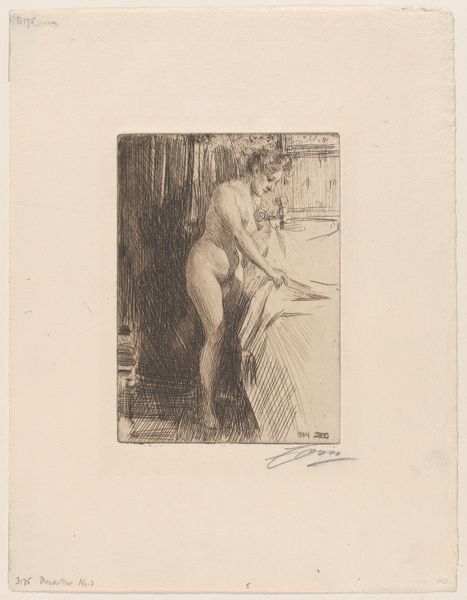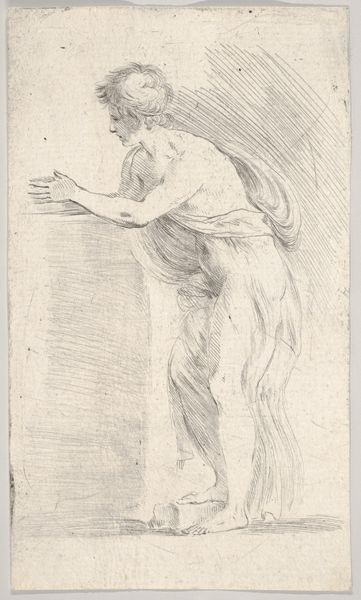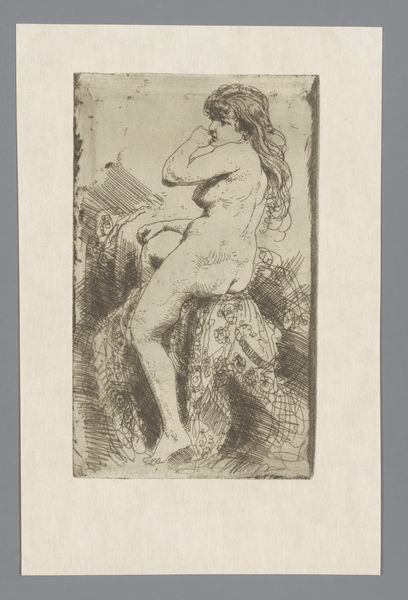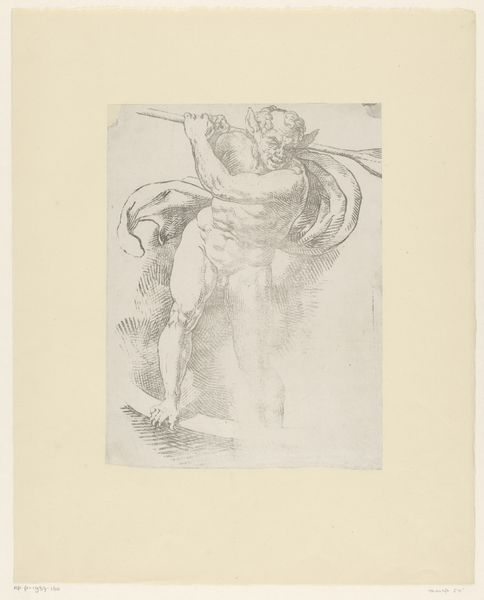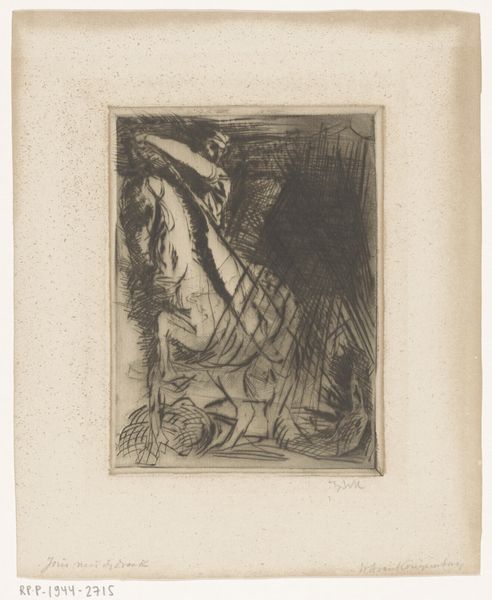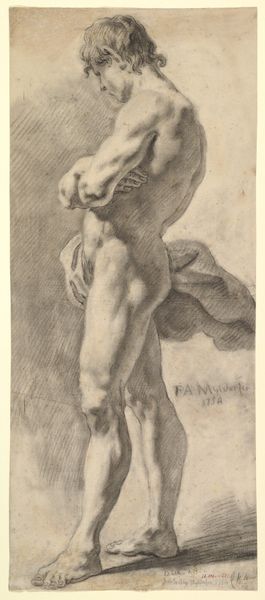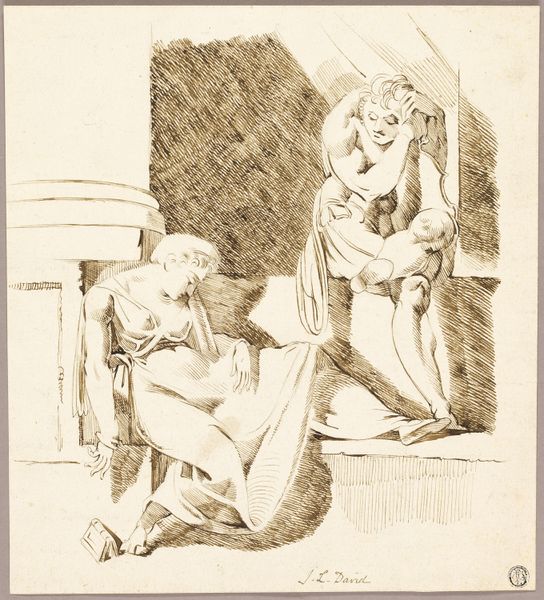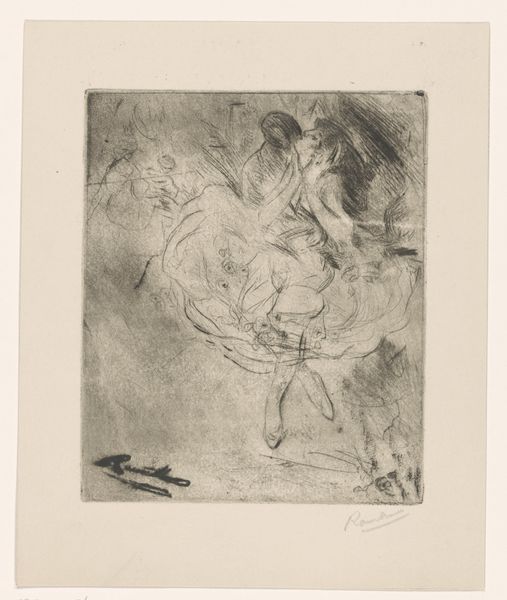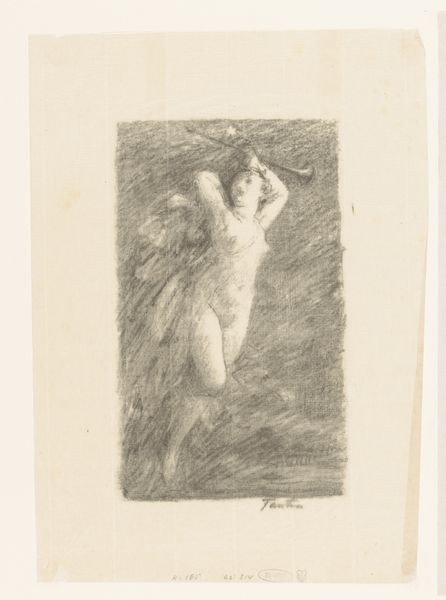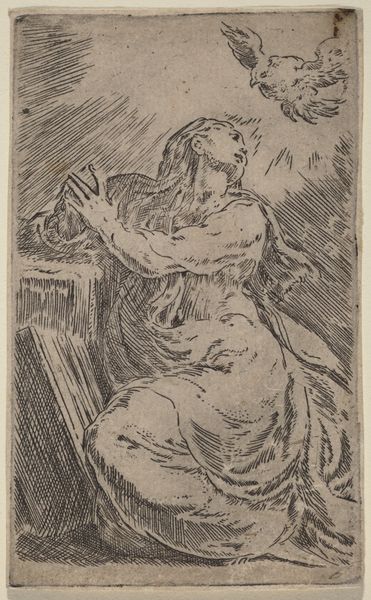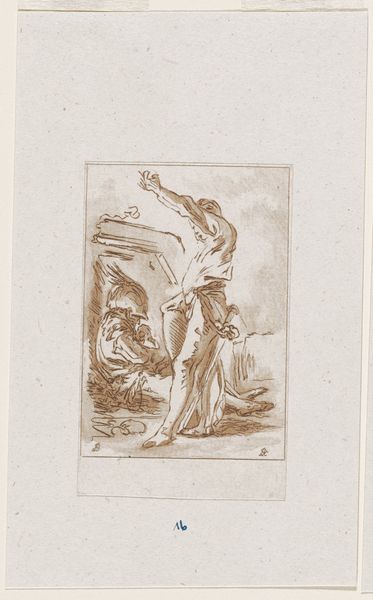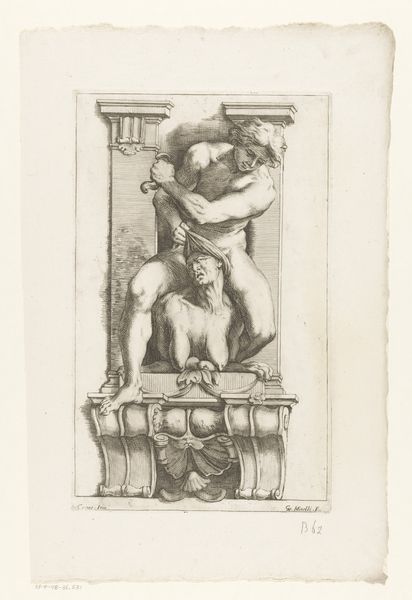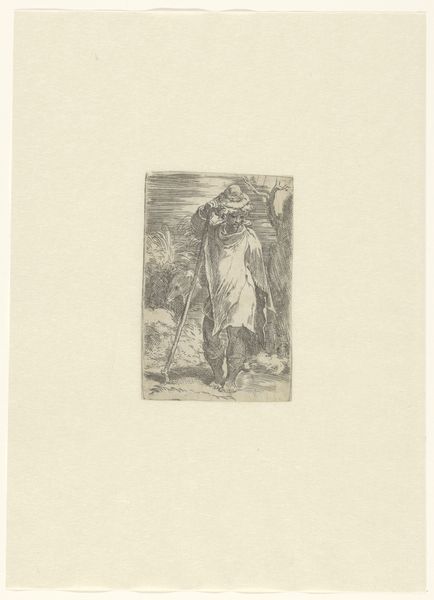
Vrouwelijk naakt met waaier in de hand en rechts van haar een ineengedoken figuur 1913
0:00
0:00
etching
#
etching
#
german-expressionism
#
figuration
#
nude
Dimensions: height 218 mm, width 99 mm
Copyright: Rijks Museum: Open Domain
Editor: Lovis Corinth’s etching, “Vrouwelijk naakt met waaier in de hand en rechts van haar een ineengedoken figuur,” which translates to “Female Nude with Fan in Hand and a Crouching Figure to Her Right,” created in 1913, is quite striking. I’m drawn to the contrast between the confident stance of the nude woman and the dejected figure beside her. How do you interpret this work? Curator: The stark contrast you noticed is crucial. Considering the socio-political climate of 1913, on the cusp of World War I and amidst growing societal anxieties about women's roles, the etching speaks volumes. The dominant female nude, fan held high, subverts the typical male gaze of the time. Yet, Corinth doesn't present a simple image of female empowerment. The crouching figure introduces an element of vulnerability, perhaps reflecting the internal conflicts women faced navigating these shifting social landscapes. Do you think the expressive lines characteristic of German Expressionism contribute to this sense of tension? Editor: Absolutely! The harsh, almost frantic lines definitely amplify the emotional weight. It's interesting how the German Expressionists used figuration in ways that challenge traditional, romanticized representations of the body. Curator: Exactly! And that’s where we see Corinth engaging with broader dialogues about identity. How does representing the female form in such a raw manner disrupt established power structures and question societal expectations surrounding femininity? It seems to speak against the grain. Editor: I see what you mean. Instead of idealizing the nude, Corinth presents a figure with both power and vulnerability. Thinking about it that way makes me wonder if he was commenting on the conflicting demands placed on women at the time. Curator: Precisely! The etching becomes a powerful visual statement about the complexities of female identity in a rapidly changing world. It resists simple interpretations. I'm also reflecting on the power dynamics at play here, and how Corinth subverts male power. It has the capacity to elicit social change, after all! Editor: This has given me so much to consider regarding the social and historical implications. Thank you. Curator: And thank you! These types of collaborative conversations help us recognize the importance of reinterpreting these classical themes from an interdisciplinary perspective.
Comments
No comments
Be the first to comment and join the conversation on the ultimate creative platform.
